
Filter News
Area of Research
- (-) Materials (60)
- (-) National Security (25)
- (-) Nuclear Science and Technology (15)
- Advanced Manufacturing (4)
- Biology and Environment (28)
- Computational Biology (1)
- Computational Engineering (2)
- Computer Science (7)
- Electricity and Smart Grid (2)
- Energy Science (117)
- Fusion and Fission (10)
- Fusion Energy (7)
- Materials for Computing (9)
- Mathematics (1)
- Neutron Science (122)
- Nuclear Systems Modeling, Simulation and Validation (1)
- Quantum information Science (1)
- Sensors and Controls (1)
- Supercomputing (55)
- Transportation Systems (2)
News Type
News Topics
- (-) Advanced Reactors (13)
- (-) Artificial Intelligence (20)
- (-) Clean Water (3)
- (-) Grid (10)
- (-) Neutron Science (38)
- (-) Transportation (16)
- 3-D Printing/Advanced Manufacturing (28)
- Big Data (7)
- Bioenergy (15)
- Biology (8)
- Biomedical (9)
- Biotechnology (1)
- Buildings (5)
- Chemical Sciences (32)
- Composites (9)
- Computer Science (35)
- Coronavirus (7)
- Critical Materials (13)
- Cybersecurity (20)
- Energy Storage (34)
- Environment (19)
- Exascale Computing (2)
- Frontier (2)
- Fusion (16)
- High-Performance Computing (7)
- Isotopes (16)
- ITER (1)
- Machine Learning (15)
- Materials (71)
- Materials Science (77)
- Mathematics (1)
- Microscopy (26)
- Molten Salt (7)
- Nanotechnology (39)
- National Security (35)
- Nuclear Energy (50)
- Partnerships (15)
- Physics (30)
- Polymers (17)
- Quantum Computing (3)
- Quantum Science (12)
- Security (11)
- Simulation (1)
- Space Exploration (7)
- Summit (4)
Media Contacts

Researchers have pioneered a new technique using pressure to manipulate magnetism in thin film materials used to enhance performance in electronic devices.
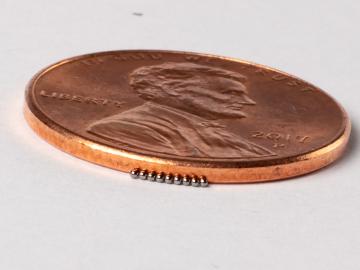
For the first time, Oak Ridge National Laboratory has completed testing of nuclear fuels using MiniFuel, an irradiation vehicle that allows for rapid experimentation.
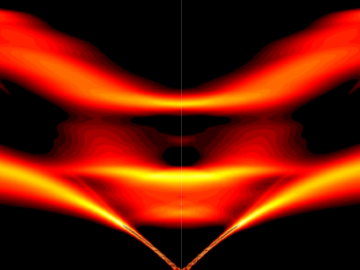
Scientists have discovered a way to alter heat transport in thermoelectric materials, a finding that may ultimately improve energy efficiency as the materials
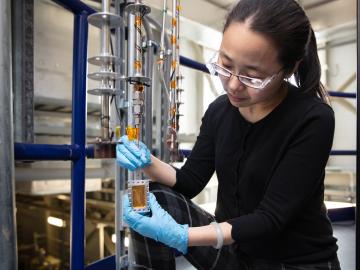
Researchers at the Department of Energy’s Oak Ridge National Laboratory, Pacific Northwest National Laboratory and Washington State University teamed up to investigate the complex dynamics of low-water liquids that challenge nuclear waste processing at federal cleanup sites.
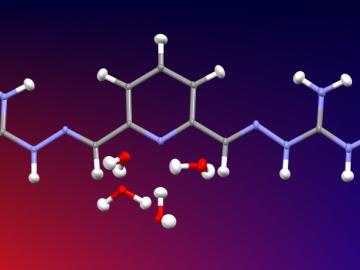
Researchers used neutron scattering at Oak Ridge National Laboratory’s Spallation Neutron Source to investigate the effectiveness of a novel crystallization method to capture carbon dioxide directly from the air.
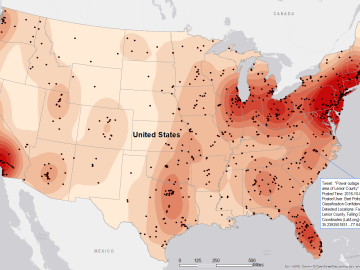
Gleaning valuable data from social platforms such as Twitter—particularly to map out critical location information during emergencies— has become more effective and efficient thanks to Oak Ridge National Laboratory.

Oak Ridge National Laboratory scientists studying fuel cells as a potential alternative to internal combustion engines used sophisticated electron microscopy to investigate the benefits of replacing high-cost platinum with a lower cost, carbon-nitrogen-manganese-based catalyst.

The Department of Energy’s Oak Ridge National Laboratory is collaborating with industry on six new projects focused on advancing commercial nuclear energy technologies that offer potential improvements to current nuclear reactors and move new reactor designs closer to deployment.

A team of scientists has for the first time measured the elusive weak interaction between protons and neutrons in the nucleus of an atom. They had chosen the simplest nucleus consisting of one neutron and one proton for the study.

Scientists from Oak Ridge National Laboratory performed a corrosion test in a neutron radiation field to support the continued development of molten salt reactors.


